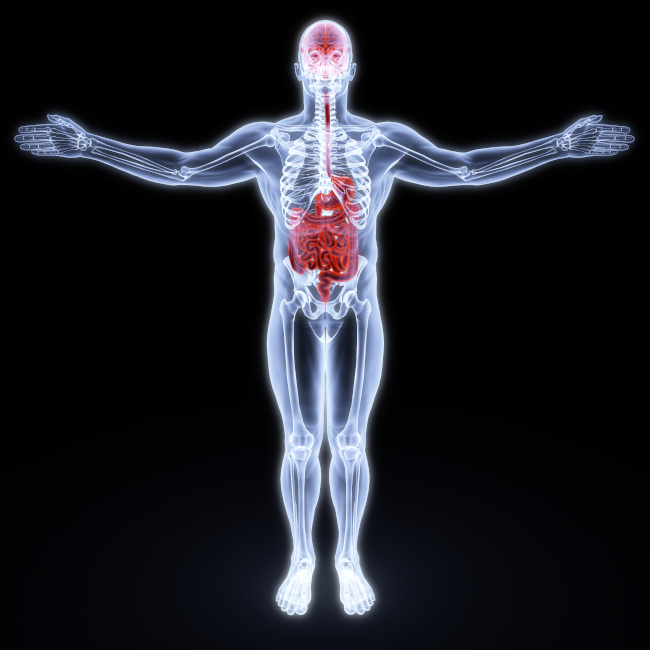Just as we spend weeks, months or even years training towards our goals to improve our physical strength and endurance, should we also consider training our digestive system so that it delivers the nutrients we need more comfortably and efficiently?
Regular TORQ customers will note that they will rarely experience gastric upset during exercise and this is because we have spent years developing the scientifically robust and fool-proof TORQ Fuelling System which enables fuelling and hydration delivery to be adjusted based on exercise intensity, duration and the environmental conditions. There will of course be occasions where gastro-intestinal (GI) issues will raise their ugly head and this can be for a variety of reasons. In this article, we discuss how to avoid these issues and shed light on how training the gut, just like we train our muscles, can significantly reduce the potential of developing GI upset during exercise.
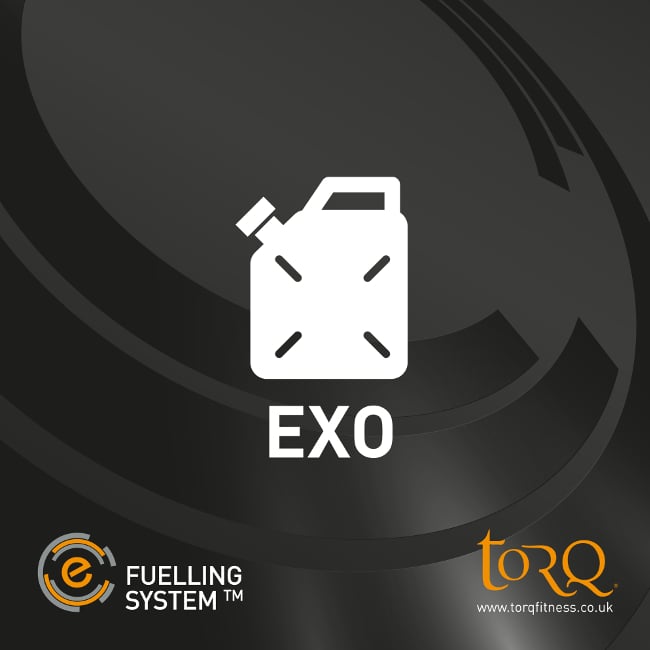
If you frequently read TORQ’s Nutrition & Performance Articles, you will be familiar with the term ‘Exogenous Carbohydrate’. For those who are less familiar, this simply refers to fuel or carbohydrate that we consume during exercise from energy drinks, gels, bars and chews.
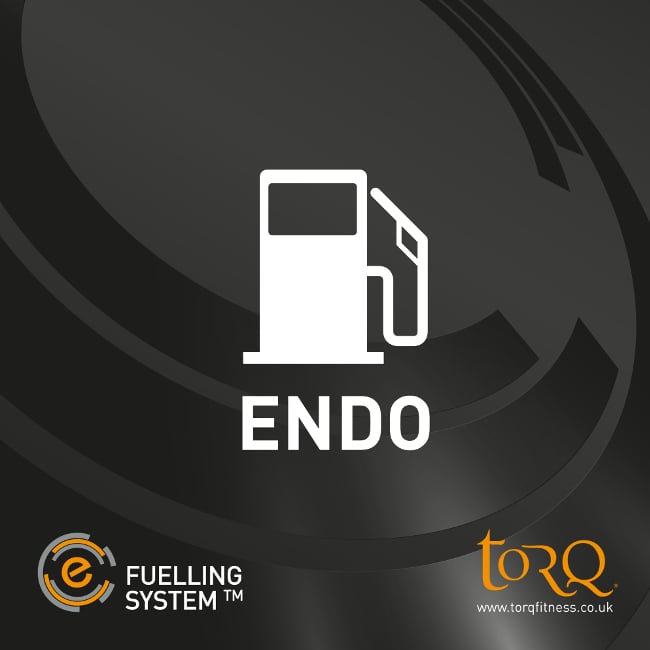
Our ‘Endogenous Stores’ refer to carbohydrate held within the muscles and liver in very limited supply, providing in the region of 1.5 – 2 hrs worth of fuel before they become depleted and we hit the dreaded “wall” – an experience and sensation that sees any glimpse of a personal record go to the grave. The principle of fuelling with ‘Exogenous’ carbohydrate is that it can significantly extend time to exhaustion, or afford you a higher pace, both of which will increase your performance.
Although the mechanisms of digestion remain identical at rest and during exercise, there is one complication that exercise exerts on the GI system and that is a restriction of blood and oxygen to the associated organs. During exercise we see a significant redistribution of blood and oxygen, with the majority being sent to the exercising muscle. This limits the function of the gastro-intestinal system and so it becomes compromised, even before we add any exogenous fuel sources! At low to moderate carbohydrate ingestion rates (30 – 60g of carbohydrate an hour) research and our years of experience working with active people have confirmed that training the gut is not necessary. However, as carbohydrate ingestion rates start to reach 90 (or even 120) grams of carbohydrate an hour, training the gut can be highly effective in reducing GI distress during exercise, giving you one less thing to worry about during your key event as well as offering obvious performance advantages.
Typical Gastro-Intestinal Complaints
GI complaints are typically categorised in to upper and lower regions and we have provided a table below to highlight the symptoms that occur from each.
| Upper GI Distress | Lower GI Distress |
|---|---|
| Belching | Flatulence |
| Heart Burn | Urge to Defecate |
| Bloating | Intestinal Cramping |
| Stomach Cramp | Diarrhoea |
| Vomiting |
We stress that these kinds of symptoms can be largely avoided through a combination of better understanding how to fuel and hydrate as well as specifically training your gut. Putting the right things into your mouth during exercise is fundamentally the starting point and once you understand these principles, further benefits can be exploited through training the GI system.
Think About What You’re Putting In!
As a starting point, gastro-intestinal issues typically occur when either the wrong kinds of nutrients/formulations are taken onboard or too little or too much is consumed:
The Wrong Nutrients: Exogenous fuelling is all about carbohydrate consumption and you must avoid ingesting foods or drinks containing fat or protein during exercise. Fat will block the absorption of carbohydrate, which is the ONLY relevant exogenous nutrient for fuelling. Essentially, if you block the absorption of this vital nutrient, not only will you restrict the performance benefits, but you will undoubtedly cause GI distress as food/drink backs up in your stomach. Although we burn fat during exercise, even the leanest of individuals stores enough of it to fuel a small army, so you don’t need to eat it. Protein is similarly an irrelevant fuelling nutrient as once again it will typically delay the absorption of carbohydrate, resulting in GI issues and in most cases it will get converted to carbohydrate through a process called ‘gluconeogenesis’ at an energy cost to the body. What’s the point in that? There are some cases where protein intake should be considered during exercise, such as certain ultra-endurance events or stage races and training camps, but these really are exceptional circumstances. We discuss this in the following two resources:
We also discuss the right and wrong nutrients in great detail in our article The Anatomy of an Energy Bar which is well worth a read. In this piece, we talk about what constitutes the perfect energy bar and addresses what to look out for and what to avoid. There are a number of flawed products available, which confusingly are marketed as ‘Energy Bars’. Of course we would never advocate the removal of fat and protein from your diet, they are essential to life, but there is a time and a place for their consumption and understanding this is critical. They have no place in your energy products.
Too Little: A common example of GI complaints as a result of under consumption is when hydration is neglected on a hot day and the majority of fuel delivered comes from concentrated fuelling products such as energy gels, bars and chews. Water and sodium play a key role in the delivery of carbohydrate from the intestine (the site of nutrient absorption) to the blood and so when hydration is neglected – water is not available to support the delivery of carbohydrate, and thus carbohydrate backs up in the intestinal tract and discomfort such as intestinal cramps could start to occur. The animation in the short video below demonstrates how water, sodium and glucose work optimally together. Also, in our technical article Hypotonic, Isotonic or Hypertonic, we talk about how important it is to get the balance of carbohydrate, water and electrolytes right and how this balance changes depending on weather conditions/perspiration rates. This is why we developed the TORQ Fuelling System – because it does all of this for you.

Too Much: An example of overconsumption is the over-saturation of the intestinal transporters, which transport carbohydrate molecules from the intestine into the blood. This can typically occur when too much carbohydrate is ingested and the intestinal transporters responsible for absorbing these nutrients reach their saturation threshold and simply cannot deliver any more.
TORQ’s fuelling products boast a 2:1 Glucose:Fructose ratio which allows SGLT-1, the intestinal transporter for glucose, to become saturated at 60g per hour whilst 30g of fructose can be delivered via separate GLUT5 transporters. Extensive research supports the delivery of 90g of carbohydrate per hour through this dual delivery mechanism and it works so effectively because as SGLT-1 becomes saturated, an additional 30g of carbohydrate can be delivered from fructose using a completely different and nonconflicting pathway.
Many sports nutrition brands compose their products using glucose only, yet still recommend ingesting 90g of carbohydrate an hour. If the saturation of SGLT-1 for glucose absorption is reached at 60g an hour, all that will happen is 30g of carbohydrate will accumulate per hour in the gut causing GI distress. To learn more about carbohydrate ratios and their significance, please take the time to read our Understanding Glucose:Fructose Ratios article.
Stomach Comfort & Training
Our stomach is best explained as a reservoir, where food and liquids are held for short periods of time, while stomach bile and various enzymes further break down the ingested and chewed foodstuffs. Because relatively large volumes can be held in the stomach, this is one of the first places where GI issues could occur during exercise, especially when large volumes of fluid are ingested during hot conditions in an attempt to remain hydrated.
The current nutritional guidelines for hydration recommend that fluid intakes during exercise should prevent a 2% reduction in body weight from sweating, so for a 75kg person this equates to a 1.5kg fluid loss. Whilst this may not seem like a lot, it is staggering as to how much water the body can lose during exercise. In some instances, people may be able to lose close to this value every hour in the summer, which of course during a 4-hour event would mean consuming, at least 6 litres of TORQ Energy Drink.
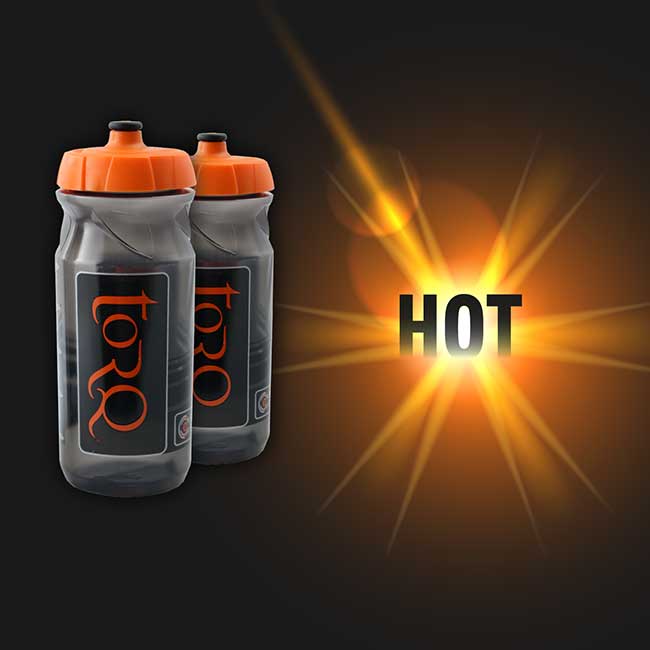
We have first hand anecdotal evidence of these levels having been achieved, notably by a former TORQ-Fuelled World Class Mountain Bike Marathon athlete, Sally Bigham who benefitted from an exceptionally well adapted gastro-intestinal system from years of training and competing with high carbohydrate and large volumes of fluid. Sally was only 52Kg when she was competing too, which makes this achievement of 6 litres in 4 hours all the more impressive. She also regularly reported back to us that she consumed 90g of carbohydrate per hour via TORQ’s Fuelling System products without fail during competition. For many of us however, the thought of consuming 6 litres of fluid at race pace over a 4-hour period is simply unimaginable. Because of this, research is now offering us clear approaches on how to train the gut to tolerate more carbohydrate and volumes of fluid.

Research from Lambert et al., (2008) found that when runners consumed a carbohydrate and electrolyte drink, just like TORQ Energy Drink, at a rate that matched their sweat rate over 6 training sessions, participants found their gastric comfort significantly improved. This is an interesting finding as runners typically experience more GI complaints than cyclists, simply due to the inherently vigorous motion caused by running. What this study was unable to identify was exactly why the gastric comfort improved, however two possibilities were suggested:
- The stomach walls extended as a result of the increased fluid ingestion and so the total stomach reservoir could now hold more liquid.
- Because the stomach walls extended, the stomach became better at tolerating a larger volume and it not as perceived as so full.
Although few studies have directly investigated the effects of this type of nutritional training on stomach volume, there is a whole host of anecdotal evidence that supports the suggested adaptations. To put it in to some sort of context, think about a time of the year such as Christmas or a family holiday where you may take a break from your day-to-day diet and enjoy the different foods on offer. You may find that you eat more than normal and whilst initially you feel full quickly, it only takes a few days for you to be able to handle the larger volume of food without feeling so over-laden. This is a dangerous proposition for your waistline for sure, but gives an indication as to how easily the digestive system can be trained.
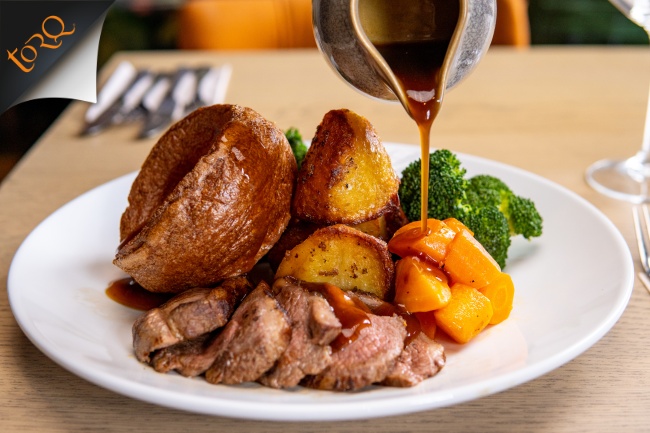
Gastric (Stomach) Emptying
This is the rate at which nutrients such as fat, carbohydrates and protein leave the stomach and enter the small intestine, the place where nutrients are absorbed into the blood, an area specifically named the ‘jejunum.’ It’s within the jejunum (the middle part of the small intestine) where most of the fats, carbohydrates and proteins are absorbed into the blood. Interestingly, the Jejunum can also control the rate at which these nutrients leave the stomach, so it stands to reason that if we can train the jejunum to tolerate a greater volume of nutrients, there is less left in the stomach and upper GI complaints such as bloating are less likely to occur.
When a large volume of certain nutrients (fats, carbohydrate or protein) arrive within the jejunum, nutrient sensors will detect the volume of certain nutrients and ‘decide’ how capable the various nutrient transporters are at absorbing these from the intestine to the blood. If the sensors decide that the transporters are at, or close to, absorption capacity, it will limit the release of these nutrients from the stomach, slowing gastric emptying and potentially causing bloating.
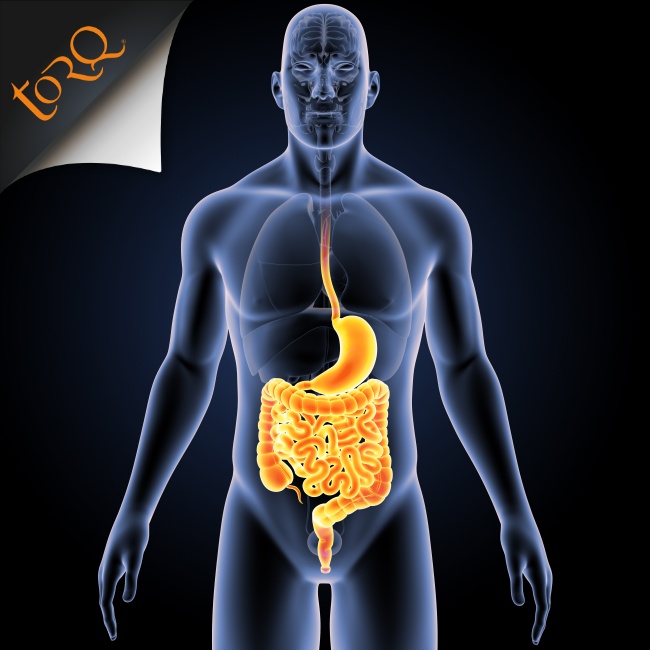
A well conducted study from Cunningham et al., (1990) had 26 participants consume two diets. Whilst the basis of the two diets were identical, one of the diets had participants ingest an additional 400g of glucose in the form of an energy drink for 3 days. After the 3 days of ingesting a large amount of glucose, a high glucose test meal was provided to the participants. The amount of time it took for the test meal to be emptied from the stomach was recorded. This study provided some really interesting data and showed that after 3 days of supplementing with high glucose, the time it took for the high glucose test meal to be emptied was significantly faster – by a huge 9 minutes! This group also consumed a protein-based test drink and found that the rate at which the high protein drink was released from the stomach was unchanged after either diet. It was this study that showed for the first time that the gastro-intestinal system can adapt to specific nutrient exposure. This allowed us to understand that the small intestine was able to tolerate a greater amount of carbohydrate in the GI tract without discomfort, but also that these adaptions occurred in as little as 3 days! This highlights the importance of training with your race day nutrition. Can you really expect the GI system to tolerate 90g of carbohydrate per hour during a major event, if during training you have only exposed it to 30g/hr.
Interestingly, a study by Mears et al (2020) confirmed that the gastric emptying rate is also linked to the size of the dose of drink consumed. Gastric emptying is faster and greater if less frequent larger volume feeds are taken compared with constantly sipping on a drink. The study concluded that these benefits were as a result of the increased gastric pressure provided by the larger doses, which stimulated receptors in the gastric mucosa, increasing the rate of gastric emptying. This isn’t so much a GI training technique, but like consuming the correct nutrients in the first place and getting the fluid/electrolyte/carbohydrate balance right, you should certainly consider incorporating larger volume feeds into your nutritional strategy if you don’t currently.
Intestinal Absorption & Oxidation
It is important to remember that just because nutrients may be released from the stomach to the intestine more efficiently, it does not mean that they are absorbed more quickly. Nutrients are absorbed in the jejunum of the small intestine by specific intestinal transporters. It’s within the small intestine where the carbohydrate we ingest from energy drinks, gels, bars and chews finally get transported to the blood where it will ultimately arrive at the working muscles as fuel.
A Study from Cox et al., (2010) saw two groups train 16 hours per weeks for 28 days. One group consumed a moderate carbohydrate diet, achieving 5g/kg body weight of carbohydrate a day. This carbohydrate was consumed during exercise and also outside of the exercise window. The second group was named the ‘high carbohydrate group’. This group had the same baseline diet of 5g/kg body weight of carbohydrate per day, but they also received an additional 1.5g/kg body weight of carbohydrate per hour from a glucose-only drink during exercise (purposely exceeding the known glucose absorption threshold of 60g/hr).
After 28 days, both groups completed a 100-minute steady state ride at a moderate exercise intensity while consuming a high carbohydrate glucose-only drink. The main outcome of this study was that the group that consumed the high carbohydrate diet with a high energy glucose drink during exercise were able to absorb and burn more carbohydrate during the exercise test, while there was no change for the control group. The reason for this increase in oxidation (burn rate) may have been due to an increase in the activity of the SGLT-1 glucose transporter, allowing for a greater absorption and delivery of carbohydrate to the blood and thus the muscle.
Although the amount of glucose burnt in this study did not exceed much beyond the known glucose threshold of 60g per hour, increasing only to a modest 63.6g from 54g, the data did suggest that glucose transportation could be trained and that is very interesting. As we’ve previously mentioned, a 2:1 Glucose:Fructose formulation can deliver 90g of carbohydrate per hour without GI training, so why bother trying to get modest gains on glucose-only products? What if you could train your gut to absorb and use more than 90g carbohydrate per hour with a 2:1 product though?
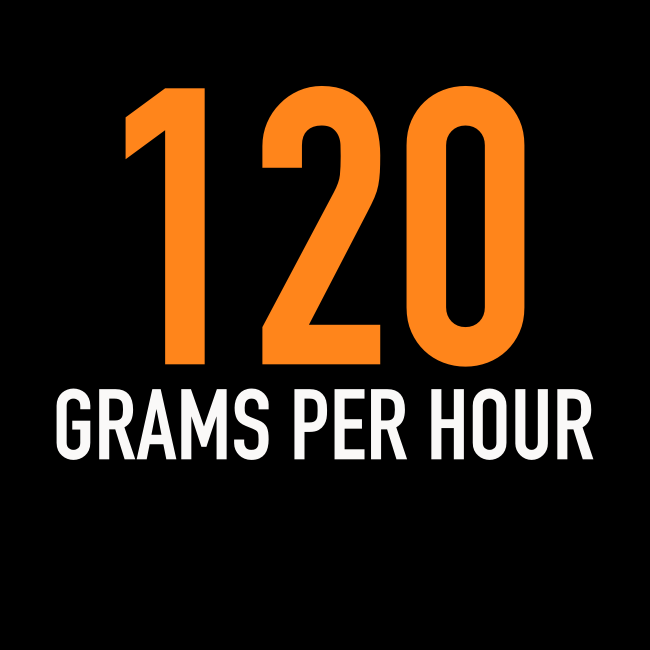
In another paper, exploring muscle damage in mountain marathon runners from Viribay et al., 2020, found that those who consumed 120g of carbohydrate per hour in a 2:1 Maltodextrin:Fructose formulation (just like TORQ) during a mountain marathon race had significantly less muscle damage than those who consumed 60 or 90g of carbohydrate per hour. The group who consumed 120g of carbohydrate per hour did complete 3 weeks of individualised gut training where carbohydrate ingestion was gradually increased until 120g of carbohydrate ingestion per hour was tolerable. Although the amount of carbohydrate that was burnt during the marathon was not monitored during exercise, the amount of muscle damage after the marathon was found to be significantly less.
So could this suggest that by training the gut to tolerate 120g of carbohydrate per hour, it increased the amount of available fuel and therefore caused less muscle damage? Whilst we don’t have the exact answer just yet, it does offer a strong suggestion that the number of SGLT-1 transporters could increase and/or the activity of the transporters are enhanced. This study was designed to explore carbohydrate ingestion rates on muscle damage, not gastric comfort, however it is one of the first modern and field-based studies to provide participants with 120g of carbohydrate an hour from a 2:1 ratio. Most importantly, the participants did not suffer with gastric upset using this formulation.
We will keep a very close eye on this topic as research in these areas progresses. Once again, we point you toward our focussed article on Understanding Glucose:Fructose Ratios should you wish to learn more.
Methods Of Gut Training
Ironically, some (but not all) of the methods used to train the gut are approaches that coaches would typically suggest avoiding in an attempt to reduce GI distress during competition. However, we need to look at this as an area we are trying to improve, so just like any new training type, whether its interval, endurance, strength or gut training, sessions are always uncomfortable to begin with before becoming progressively more achievable and tolerable.
Here are some GI-training sessions you could incorporate into your race/event preparation:
Training With Large Volumes Of Fluid: If you know you are going to be completing an event in the summer or abroad, where the environmental conditions are likely to be hot, training the gut and importantly the stomach to tolerate high volumes of fluid could be highly beneficial. As we already mentioned, sweat rates can exceed 1 litre per hour, especially in well trained individuals, so an effective strategy could be to consume at least 1 litre of TORQ Energy Drink every hour whilst training. If this is completed during cooler conditions, you may find yourself having to stop for a ‘nature break’ more frequently as your sweat rate will be less, but don’t let this concern you, as you are well on your way to improving your stomach emptying and increasing stomach volume in an attempt to tolerate a greater amount of fluids. Alternatively, consider simulating the high-sweat conditions you’re going to be experiencing in your event by doing some of these GI-training sessions indoors. In line with research from Lambert et al., (2008), we would suggest doing this type of focused GI-training in the approach to your important event by completing 6-8 training sessions with high volumes of fluids prior to your big day. For more information on how to prepare for events in general, take a look at our Peaking For Competition article.
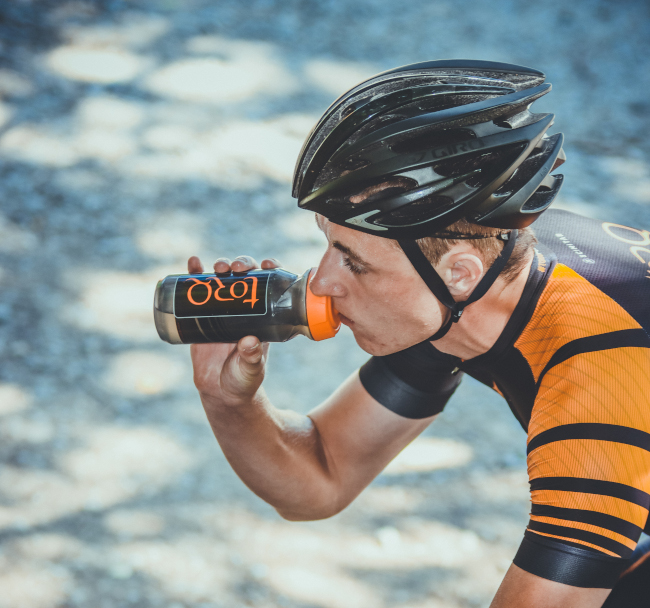
Training With High Carbohydrate: If we know that carbohydrate absorption is critical to endurance performance, it is important that the body has the capacity to absorb, and oxidise carbohydrate during exercise. To allow this to happen, we must ensure that we feed with carbohydrate during our training sessions with at least 60 – 90g of carbohydrate per hour. For those of you wanting to target 120g of carbohydrate per hour, we would suggest gradually building up to this quantity over a 3-week period.
Work exploring low carbohydrate diets has highlighted that when carbohydrate is restricted from the diet for prolonged periods of time, we can lose the capacity to breakdown this highly valuable fuel source and we become ‘metabolically inflexible.’ Of course, for any sport that requires bouts of high intensity exercise, it is critical that we can access carbohydrate to support the anaerobic energy system to allow us to make or respond to attacks and increase our power output over climbs.
We suggest incorporating high carbohydrate training into any high intensity training session lasting longer than 60 minutes. We would also recommend this during lower intensity long duration training sessions where it is likely that your endogenous stores of carbohydrate will deplete over an extended period of time. Training with high carbohydrate (90g/hr and beyond) will reduce sensations of stomach fullness, improve gastric emptying and also increase the capacity to absorb and oxidise large amounts of carbohydrate, improving performance.
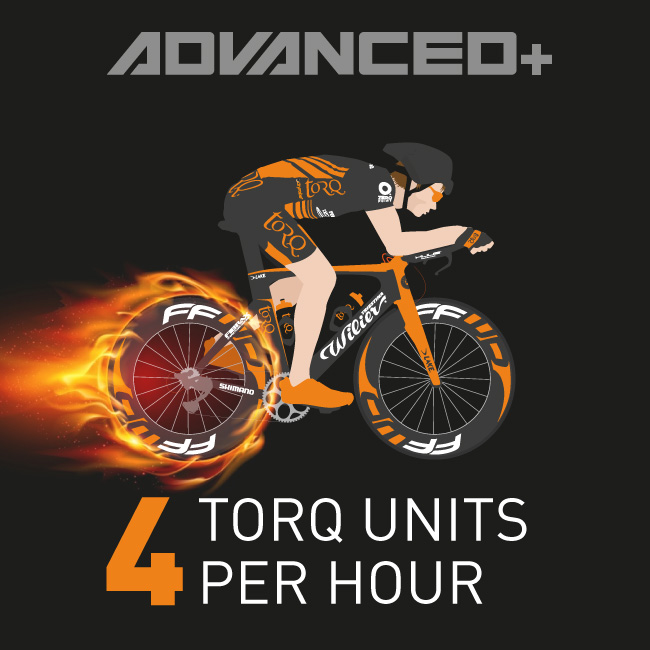
Training After a Meal: One of the more aggressive approaches to gut training could include training on a full stomach, immediately after a meal. It should be noted that this may not be the most comfortable of approaches, but nonetheless it’s a method that has been explored within sport and exercise science literature. The rational for this supports the concept of increasing the tolerance and comfort within the gut whilst exercising, whilst the gastro-intestinal system also attempts to break down the residual foodstuff. The principle of this approach is that once adapted, training or competing on a light pre-exercise breakfast would feel like a walk in the park! This isn’t a method that seems overly desirable to us, because it’s likely to cause the most disruption to your training – we would sooner recommend overconsumption of ‘relevant’ nutrients (carbohydrate) rather than just ‘food’ for all the reasons previously explained.

Conclusion
Just like training our muscles and cardiovascular system, training the gut looks to be a new approach which could allow us to tolerate, ingest and absorb more carbohydrate and fluid. As races are getting longer, the demand for high fuel intakes is ever increasing and because we know that the gut is highly adaptable, it seems logical to add focused training sessions into our weekly or monthly training plan. This would seem especially relevant in the lead up to key events where we know fuelling will have a significant impact on our performance.
Aside from specifically ‘training the gut’ it is vital to apply good well thought out practices, including choosing the correct research-proven fuel formulations, getting the fluid/electrolyte/carbohydrate balance right and taking less frequent larger doses of drink to encourage gastric emptying. These are not gut-training techniques, they are simply fundamental principles of successful fuelling.
It is unlikely to be necessary for most people to train the gut to tolerate up to 90g of carbohydrate per hour, providing a 2:1 glucose:fructose formulation is ingested, but should you wish to push the limits to 90 – 120g per hour, you are likely to find that adding some focused GI training will be beneficial.
If you have any further questions about this article or any other on this website, please don’t hesitate in contacting us on 0344 332 0852 or by email on enquiries@torqfitness.co.uk
If you would like further information about TORQ’s Fuelling System products or would like to purchase, please click HERE.
References
Lambert, G.P., Lang, J., Bull, A., Eckerson, J., Lanspa, S. and O’Brien, J., 2008. Fluid tolerance while running: effect of repeated trials. International journal of sports medicine, 29(11), pp.878-882.
Cunningham KM, Horowitz M, Read NW. The effect of short- term dietary supplementation with glucose on gastric emptying in humans. Br J Nutr. 1991;65:15–9.
Jeukendrup, A.E., 2017. Training the gut for athletes. Sports Medicine, 47(1), pp.101-110.
Jeukendrup, A.E. and Jentjens, R., 2000. Oxidation of carbohydrate feedings during prolonged exercise. Sports medicine, 29(6), pp.407-424.
Jeukendrup, A., 2013. The new carbohydrate intake recommendations. In Nutritional Coaching Strategy to Modulate Training Efficiency (Vol. 75, pp. 63-71). Karger Publishers.
Viribay, A., Arribalzaga, S., Mielgo-Ayuso, J., Castañeda-Babarro, A., Seco-Calvo, J. and Urdampilleta, A., 2020. Effects of 120 g/h of carbohydrates intake during a mountain marathon on exercise-induced muscle damage in elite runners. Nutrients, 12(5), p.1367.
Murray, R., 2006. Training the gut for competition. Current sports medicine reports, 5(3), pp.161-164.
Carrio, I., Estorch, M., Serra-Grima, R., Ginjaume, M., Notivol, R., Calabuig, R. and Vilardell, F., 1989. Gastric emptying in marathon runners. Gut, 30(2), pp.152-155
Mears, S., Boxer, B., Sheldon, D., Wardley, H., Tarnowski, C.A., James, L. and Hulston, C., 2020. Sports drink intake pattern affects exogenous carbohydrate oxidation during running. Medicine and Science in Sports and Exercise, 52(9), pp. 1976 – 1982
